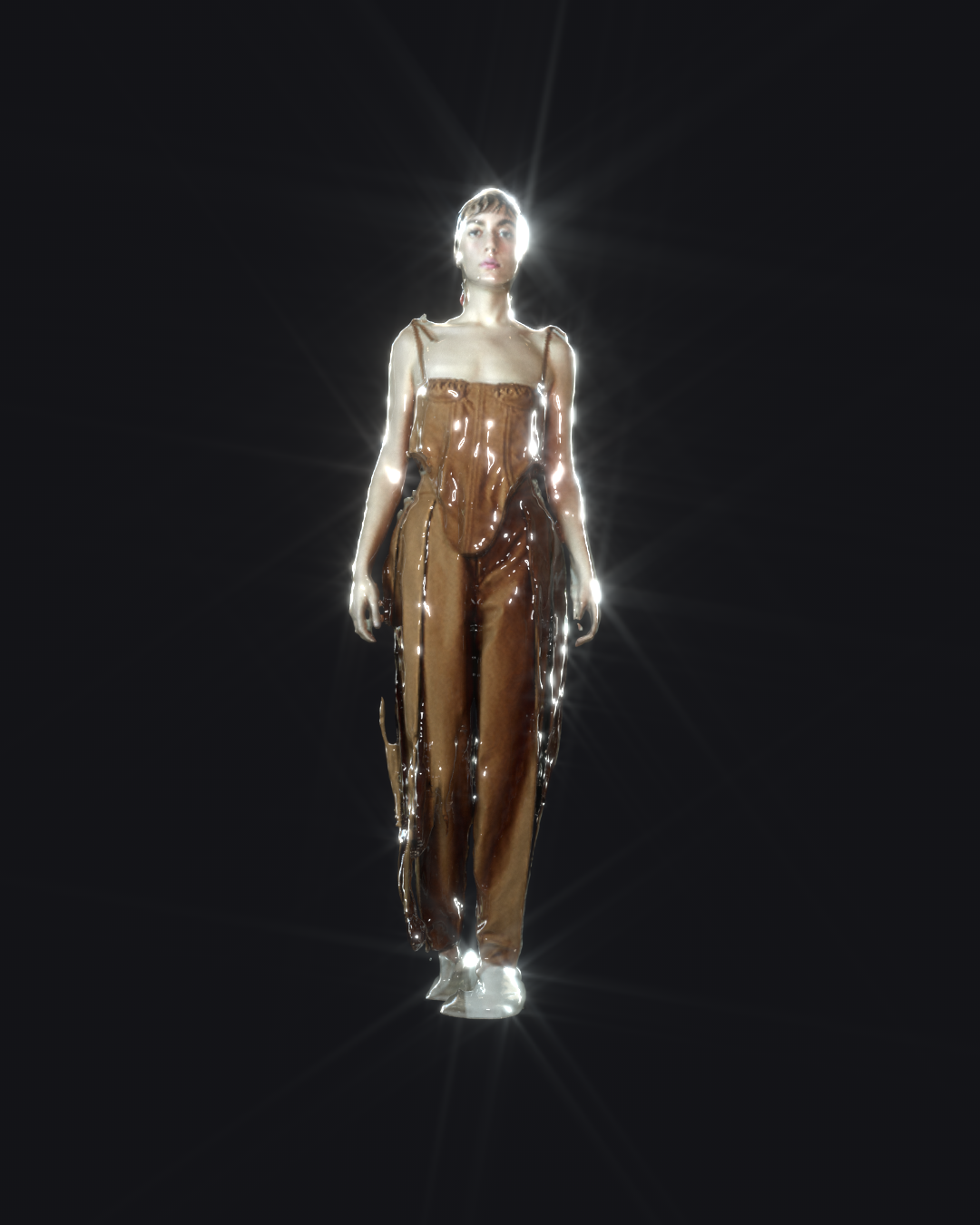⛯ Art Direction | Design
⌝ Fashion research collaboration with ÃO ⌞
2D photography → low res 3D mesh
↓
2D Photographic inputs are run through a process to infer 3D mesh (both front and back). Once we have that in 3D we can augment the image with all the tools available to us in 3D space.
‘Post—Human’ is a fashion based research collaboration with ÃO🔗. In this study we used ÃO’s visual archive as 2D fashion inputs to systematically infer 3D meshes from them and then procedurally augment the models with a stylistic layer that interacts with the human form.
Modular Stylisation
↓
A variety of test looks were built procedurally to augment and style the generated 3D forms, regardless of what 3D mesh the system was handed. This means that styles can be uniquely fit to different people and each person can also be styled with many different ‘looks’.
Aesthetic Flexibility
↓
Control within 3D means that the stylisation possibilities are incredibly flexible. We could have numerous artists creating wildly different looks that get applied to the same base systems.
Can we extend the ÃO range systematically using machine learning models as a base to imagine new garments?
↓
Using a dataset created from ÃO’s look-books we created AI humans wearing imagined ÃO garments. This also gave us a fascinating look into hybrid Models with a high degree of fluidity.
Client — FutureDeluxe/ÃO
Designed, directed & produced — FutureDeluxe
Research & Design team — Curtis Baigent, Marc Winklhofer, Kristian Glenn, Svet Lapcheva
Clothing design — ÃO
Catalogue photographers — Pedro Pinho, Raphael Tepedino, Marcelo Mudou
Models — Felipa Queiroz, Giovanna VacaniBeauty — Piu Contijo, Julia Tartari
























